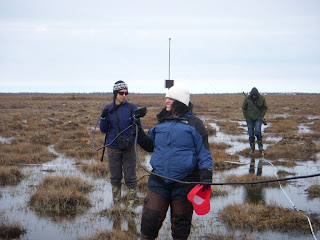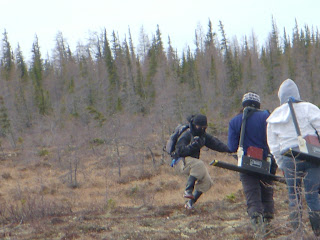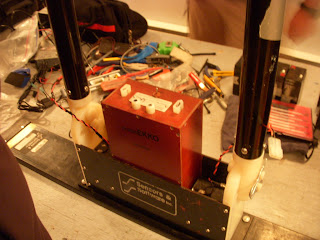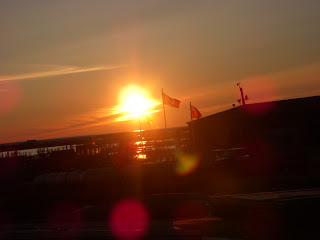

















































Clinging to the edge of Hudson Bay in the Canadian province of Manitoba is the Polar Bear Capital of the World, Churchill. It’s a little town. Fewer than 1000 people live there, but many come to visit… either to view the huge shaggy carnivores or to consort with white Beluga whales who migrate there in warmer months. This summer one of CBMS’ very own will join the crowd.
Seventh grade’s Miss Mohr will be monitoring climate change at the Arctic’s Edge as part of an Earthwatch Expedition (www.earthwatch.org). Inspired first by her daughters’ intense and academic interest in the environment, and then by her students’ musings on the subject, she applied for an Earthwatch Educators’ Fellowship. Shortly before deadline she sat down with the application, filled it out, mailed it off and forgot about it.
She never expected to actually be awarded the opportunity to spend two weeks at a remote site helping scientists do real, hard-core research measuring the effects of climate change. Earthwatch, by its own admission, “supports critical research programs in more than 30 countries, helping to gain the vital science-based information needed to make sensible, informed local management and policy decisions.” Volunteers are expected to give scientists the support they need to carry on their work in the face of limited funding.
The Earthwatch application asked what she would contribute to the success of the mission and Miss Mohr quite honestly replied “mismatched socks”. Most of the kids know her only as the teacher whose socks never match. Much to her surprise, Earthwatch apparently has a need for quirky teachers with odd socks, and replied with paperwork explaining that she would be part of a project designed to help show how much the fast climate change is affecting the Arctic – and what that means for the entire planet. The fellowship covers the cost of the Earthwatch experience and contributes towards her travel and equipment expenses.
She will fly roughly 1250 miles to Winnipeg after school gets out in June and from there head north to Churchill by train… 36 hours across land once compressed by miles of glacier ice. On site she’ll be wearing mosquito hats, a whistle (polar bear alert!) and waders as she measures the permafrost’s organic peat levels with tools like ground penetrating radar and microclimate data loggers. Miss Mohr confesses that she has no idea what these things are, either, but will be blogging and photographing all the while so her students can learn along with her.
As part of the fellowship agreement she will be posting her findings and experiences on line and in journals and hopes very much to be buoyed by email encouragement from her students. Upon her return she will use her new-found knowledge to draw up social studies and math lesson plans. Although she is also a highly qualified German teacher, she hasn’t (yet) figured out how she can work up a lesson plan for that subject. Stay tuned!